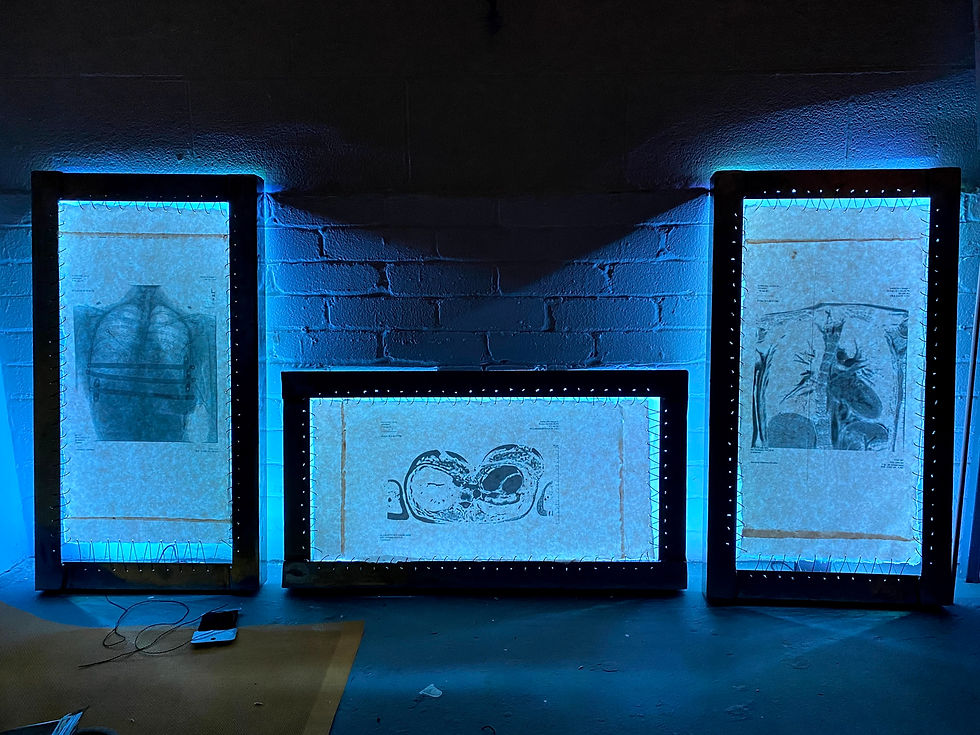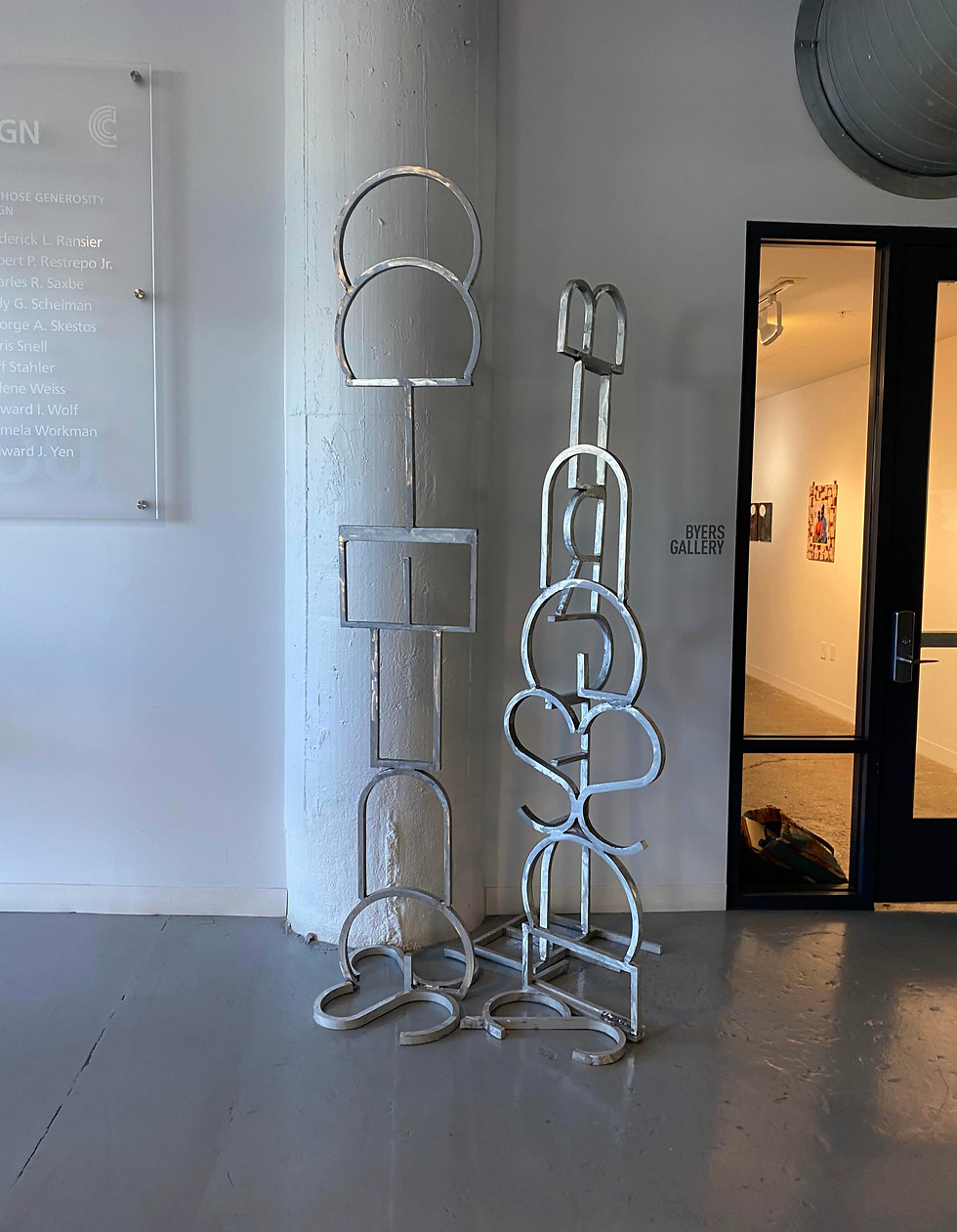Jess Schwarz.
METALLURGY.
A series of works done predominantly in metal to express my life as a young person with a disability, and how that effects my day-to-day living.





METALLURGY.1
This work explores the experience of being a disabled young person, as well as the mental and physical toll of having medical implants inside the body. Following a narrative structure with both preoperative and postoperative imagery, the metal frames represent the metal implants and the waxed cord represents post-surgical sutures. By referencing the visuals of a medical x-ray combined with metalworking and printing techniques, the work takes the abstract aspects of intense surgical procedures and combines it with the literal imagery of MRIs and x-ray images.




METALLURGY.3
This work plays with the idea of failure, as oftentimes people with disabilities -- of any kind -- can be seen as a failure by academia, society, etc, and can experience failure because we simply do not fit a mold. Failure, as it permeates our existence -- represented by the brown wax growing up the sides of the dome -- disabled or not, should be a comfortable thing. There is no success without failure, and there is no learning without failure. Failure is simply an opportunity to find an alternative way to the end goal, and that’s nothing to be afraid of. With the metal frame acting a form of protection juxtaposed by the fragile paper, the comfortable interior of the dome gives a safe environment for the viewer to be in, or perhaps share an intimate moment with someone.


METALLURGY.2
This work explores the experience of language processing as someone on the autism spectrum and the prejudice involved with having an Appalachian dialect. Imposing, 7 foot tall, metal structures are posed with harsh lighting. Using letters as their form, rather than for function, they become obscured architecture, illegible, much like the experience of dealing with language processing obstacles. Further, using metal, a cold, man-made, harsh material, the letters become hostile and imposing to the viewer, conveying the difficult and anxious nature of having not only a prejudice against accent and dialect, but having the obstacle of spectrum-related language issues compounded by that.
